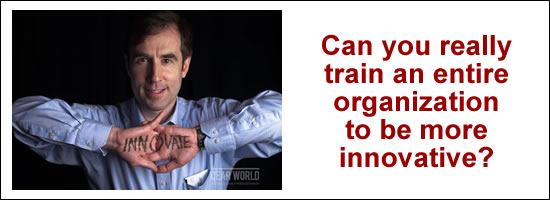
GUEST POST from Shep Hyken
It was 1927, not quite a century ago, when J. Willard Marriott and his wife, Alice, opened an A&W root beer stand in Washington, D.C. Later that year, the Marriotts added some hot food items to their menu under the name Hot Shoppes. Over the next 30 years, the Marriotts honed their hospitality skills and expanded their restaurant business into food service for airlines. In 1957, they opened their first hotel in Arlington, Virginia. It was run by their son, Bill.
Over the next 25 years, under the leadership of Bill Marriott, the hotel chain expanded across the planet. Today it represents more than 30 brands, from economy-priced lodging to uber-premium brands such as The Ritz-Carlton and St. Regis.
I recently had the opportunity to interview Julius Robinson, Marriott’s chief sales and marketing officer in the U.S. and Canada, on Amazing Business Radio. Robinson started with the Marriott organization 30 years ago in the reservations center. He knows firsthand what it takes to create an amazing customer experience.
Here are six key lessons he shared in our interview:
- The Fundamentals of Customer Service Happen One Person at a Time: When Robinson worked at the reservations center for Marriott, he learned the power of individual customer interactions. It’s about taking care of people one interaction at a time. Every customer was a chance to start over and confirm—and even build on—the Marriott reputation.
- Understand Your Customers: Understanding starts with listening. A customer who is booking a family vacation has very different needs than someone booking a business trip. The secret is to listen and avoid miscommunication. A complaint from a misunderstanding is one of the worst kinds of complaints. It’s easy to replace a dirty towel in a bathroom. It’s much harder to rebuild confidence after a miscommunication.
- Mistakes Handled Well Can Create a Stronger Bond: When there is a problem or a complaint, the way it is handled can make the difference between a customer coming back or not. Just resolving the issue doesn’t mean the customer will come back—it’s the way you do it that can make a big difference. Robinson was excited to share, “If you handle the problem the right way, the customer surveys will often be higher than if the problem had never occurred.” Problems and complaints should be seen as opportunities to prove how good you are.
- Embrace the Digital Customer Experience: When Robinson started 30 years ago, there wasn’t an Internet. Today customers may call, but often they make reservations, check-in and check out on a computer. They can even get their keys through a mobile app. According to Robinson, “Technology is an opportunity for the customer to take control over their travel experience.” The modern customer is increasingly enjoying a digital, self-service experience. However, if there is a problem at any point in their journey (no pun intended), the customer must have easy access to someone who can help, be it an agent on the phone or an employee at the front desk.
- Employees Must Be Empowered to Take Care of the Customers: Employees must be properly trained to do what is necessary to take care of customers. Robinson shared how, from the very beginning, J.W. Marriott Sr. believed in treating employees the way you want customers to be treated. In other words, leadership and management were the role models, and their behavior showed employees the right way to treat customers. Treat the employees right, and they will treat the customers right, and then the customers will come back.
- The Modern Marriott Customer Experience: Every company must grow as customers’ expectations change. During the past two years, we’ve seen customers demanding more. That challenge must be met. Many Marriott customers now expect more than just a place to sleep. The result is Marriott’s shift from simply providing a nice room and restaurant to creating an expanded experience. For example, the hotel staff can help locate hard-to-get tickets to sporting events and concerts. Maybe guests want a unique, once-in-a-lifetime experience. The Marriott team is there to help. Marriott, just like any other company, must meet its customers’ current expectations and be able to anticipate what they will need next.
Throughout the interview, Robinson shared insights into the efforts Marriott is making to get its customers to feel comfortable and confident about returning to pre-pandemic travel habits. It’s not only creating a great customer experience and providing exemplary service, but also taking measures to address customers’ concerns about safety and health. Because without that, nothing much else matters.
This article originally appeared on Forbes
Image Credit: Shep Hyken
![]() Sign up here to get Human-Centered Change & Innovation Weekly delivered to your inbox every week.
Sign up here to get Human-Centered Change & Innovation Weekly delivered to your inbox every week.





 FedEx took the shipping world by storm about forty years ago, growing to become the defacto shipping leader, unseating UPS and DHL. But, then after thirty years of strong growth they began to lose their mojo. In 2003, in a reaction to UPS’ acquisition of Mail Boxes Etc., FedEx announced they were buying Kinko’s, a large United States based copy center chain. For me this showed that FedEx was beginning to lose its way, and it appears their connection to customer expectations and the current capabilities of technology is failing. For a company based on the promise of speed, FedEx is becoming increasingly slow.
FedEx took the shipping world by storm about forty years ago, growing to become the defacto shipping leader, unseating UPS and DHL. But, then after thirty years of strong growth they began to lose their mojo. In 2003, in a reaction to UPS’ acquisition of Mail Boxes Etc., FedEx announced they were buying Kinko’s, a large United States based copy center chain. For me this showed that FedEx was beginning to lose its way, and it appears their connection to customer expectations and the current capabilities of technology is failing. For a company based on the promise of speed, FedEx is becoming increasingly slow.

 OK, it may not really be an innovation, but I appreciated the following operational efficiency anyway:
OK, it may not really be an innovation, but I appreciated the following operational efficiency anyway: